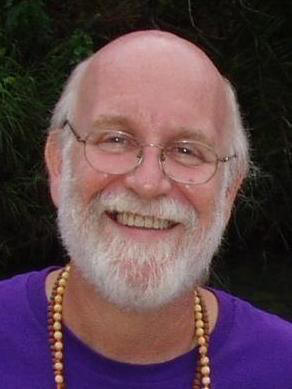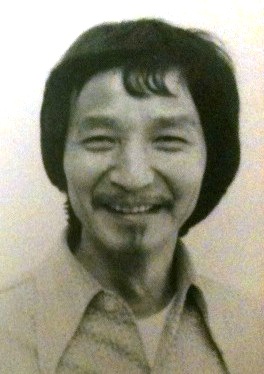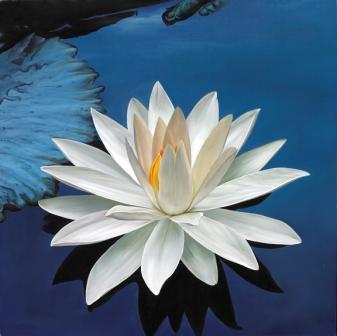|
What is Taoism?
(aka Daoism)

By Venerable
Reverend Michael Milner
Hé Tiān Dì Dàoshì (合天地 Union of Heaven &
Earth 道士 Way Teacher)
Abbot, Huā Xīn Guǎn (花 心 觀 Flowering
Heart Temple)
Taoism for me is both a splendid
philosophy and a way of life.
As a philosophy, Taoism stands out among
all esoteric philosophies as the one
that best describes the multiple layers
of reality. It comfortably embraces
paradox, alternative realities and
incomprehensible mystery, while somehow
remaining grounded in ordinary human
life. Taoism teaches a simple, practical
way of life in harmony with nature. At
the same time, it leaves the door open
and provides powerful tools for the
human spirit to soar to the very heights
of transcendence.
Taoist philosophy affirms many levels
and views of reality without declaring
one to be the “only truth” or the
“ultimate reality”, and dismissing all
the rest as lesser or illusory. The
levels of consciousness and reality are
like a spiritual skyscraper with many
floors. Every floor has its own truth
and lessons to teach, from the bottom
floors characterized by duality and
conflict, to the top floors where
non-duality, harmony and enlightenment
reside.
Hear the words of the great Taoist
Master Chuang Tzu: “Once upon a time, I,
Chuang Chou, dreamt I was a butterfly,
fluttering hither and thither, to all
intents and purposes a butterfly. I was
conscious only of my happiness as a
butterfly, unaware that I was Chou. Soon
I awaked, and there I was, veritably
myself again. Now I do not know whether
I was then a man dreaming I was a
butterfly, or whether I am now a
butterfly, dreaming I am a man. Between
a man and a butterfly there is
necessarily a distinction. The
transition is called the transformation
of material things. (As translated by
Lin Yutang)
I am drawn to Taoism, as a way of life,
because it cultivates BOTH spirituality
or spiritual “essence” (awakening to our
original nature) AND “life” in the body.
The Taoist way of life nurtures a
harmonious, balanced and unimpeded flow
of chi (life-force) in the body. This
results in a long, healthy, robust and
fulfilling life on earth. Life in the
body is considered by Taoists to be a
wholesome and desirable state, one to be
extended and enjoyed for as long as
possible. The longer one lives, the more
time there is for cultivation, learning
and growing, acquiring wisdom, becoming
enlightened, helping the people, and,
yes, simply enjoying life. That could
also include a healthy, satisfying sex
life, which, when properly managed, is
seen by Taoists as an aid to awakening
and energy cultivation, not a hindrance…
everything in balance.
The Taoist way of cultivating both
“spiritual essence” and “life in the
body”, stands in stark contrast to some
enlightenment traditions that encourage
extreme austerity, renunciation of
sensual pleasure and withdrawal from
ordinary human life. This they do in the
effort to escape from incarnate
existence in order to dissolve in the
void at the earliest opportunity. We
Taoists view life in the body as a
unique opportunity to grow and to serve
in ways that require a body. Why repress
it or cut it short?
Another feature that draws me to Taoism
as a spiritual path is that it
encourages the cultivation and use of
all of our creative powers, including
our psychic and spiritual gifts, which
emerge naturally as we evolve. Taoism
does not view them as ego-driven
obstacles to enlightenment which should
be repressed until we are fully
awakened. This is the tendency of some
other enlightenment schools. The fact
that Taoists are willing to develop and
use extraordinary powers and gifts to
help the people may explain why many
Taoist priests, in addition to being
highly enlightened masters, are also
adept shamans and healers.
As in other Eastern esoteric traditions,
Meditation is at the very heart of
Taoist cultivation. In Fact, Taoism has
much to offer meditators from other
traditions to help them find important
elements which may be missing from their
practice. You see, for us Taoists,
meditation is much more than just
sitting in silence for hours and looking
within. That is only the yin aspect of
meditation. Taoists balance quiet
sitting with moving meditation, eyes
wide open, expanding our awareness of
the outer world with its myriad
ever-changing forms and ceaseless
activity. This is the yang aspect of
meditation. Through meditation practices
which embrace the harmonious dance of
both yin and yang, we return to our
natural state, "wu wei" (which literally
means “not doing”), that is spontaneous
effortless action, naturally doing the
right thing at the right time without
thought or effort. As Taoist Grandmaster
Share K. Lew taught, "Taoist way... not
forced".

Grandmaster
Share K. Lew
My training
began when I was 18 years old under the
late Grand Master, Share K. Lew, lineage
holder of Tao Ahn Pai (Taoist Elixir
School). Share Lew was trained at the
legendary Wong Lung Kwan (Yellow Dragon
Monastery) on sacred Lu Fu Shan (shan =
mountain) in Guangdong, a Taoist temple
famous for excellence in Ch'i Kung,
meditation, kung-fu, herbal medicine and
energy healing arts.
I have practiced Tao Ahn Pai Meditation,
Ch'i Kung and Nui Gung (Internal
Alchemy) for more than 50 years. After many years
exploring the world’s great esoteric
traditions, I reached the conclusion
that this is the most complete and
balanced system I am aware of for
awakening our internal energy, the inner
alchemical dragon (called kundalini or
serpent power in other traditions),
raising and refining it to the highest
levels of development, safely, while
remaining fully functional, grounded and
integrated. This is accomplished through
simultaneously cultivating and carefully
balancing both the rising (yang) and
descending (yin) energies, moving the
kundalini energy up the back and down
the front of the body in a complete
circle (like the snake swallowing its
tail, the “ouroboros” of Western
alchemy). In Taoist culture, this is
known as the “microcosmic orbit”, and
among many other benefits, it is an
instant solution to almost all the
negative side-effects related to raising
kundalini without sufficient grounding
and balance.
At the beginning of my training, Grand
Master Lew told me, “A tree can only
extend its branches as high into the
heavens as its roots go deep into the
earth, otherwise, the first strong wind
that comes along will topple the tree.”
My experience has proven this to be
quite true.
Over the years, I have received many
powerful transmissions and gone through
intense spiritual processes with masters
from diverse traditions. The results
have been transforming, but they have
often left me scattered and ungrounded.
Whenever this happened, I always
returned to my roots, Taoist Ch'i Kung and
meditation, to help me integrate and
balance the new energies and
breakthroughs I had received from other
traditions.
I have taught the Tao Ahn Pai internal
system for more than 40 years and have
found it to be a sublime blessing, not
only for myself, but for healers,
light-workers, yogis, meditators,
martial artists and anyone who works
with energy. It is a complete internal
energy system that cultivates what we
Taoists call the three treasures:
“Ching” (physical/sexual essence or
kundalini), “Chi” (vital breath or prana)
and “Shen” (spirit or awareness). The
deeper aspect of Ch'i Kung, called Nui Gung
(meaning “Inner Power” or “Inner
Alchemy”), teaches the practitioner how
to alchemically transmute sexual energy
(Ching) into vital breath (Chi) and
vital breath (Chi) into spirit (Shen),
then, through deep meditation, to return
the spirit (Shen) to emptiness (floating
in the void, non-duality, pure
consciousness). In addition to Ch'i Kung
and meditation, Tao Ahn Pai training
includes learning to use the internal
energy to heal (Nui Gung Gee Liao) and
to fight (kung-fu), as well as the study
of herbal medicine and philosophy.
Inasmuch as I am both a Taoist Abbot and
an Interfaith Minister, I work with
people from many paths. In the future, I
will continue to offer Taoist practices
to everyone I work with in our
interfaith community. Taoism provides
essential tools to seekers from all
paths, tools which they may not find in
their own traditions. For example,
Christian contemplatives have powerful
forms of meditation, like Centering
Prayer and Hesychasm (The Prayer of the
Heart), but they may lack the tools to
help them integrate and balance the
effects of long hours spent sitting in
contemplative prayer. Taoist Ch'i Kung has
helped many contemplatives find a
healthy balance between stillness and
motion in their lives. Others, who
practice Kundalini Yoga, have found that
Taoist meditation helps them bring the
kundalini full circle, stay grounded and
avoid the possible side-effects of their
practice.
One particularly wonderful feature of
esoteric Taoism is that it teaches
primarily through direct experience,
rather than with words and ideas.
Typically a Taoist master will not speak
about something with a student until he
or she has first experienced it. To
speak about something that has not
already been experienced creates
preconceptions and expectations and
hinders true learning. Teaching through
the body and the senses, both spiritual
and physical senses, while bypassing the
cognitive “mind”, is exactly what many
Westerners need, to get out of their
heads and awaken to the experience of
reality as it is.
Looking to the future role of Taoism in
the world, it is important to note that
Taoism is not “theistic”. That is, it
does not require belief in a God who, it
is thought, created and rules the
universe. Nor is it a “religion” at all,
in the traditional sense of the word,
with dogmas, rules of conduct,
prescribed rituals and a governing
hierarchy. As such, it is an acceptable
form of spirituality even in China and
other places that frown on religion and
the idea of “God”. It also finds broad
appeal among today’s youth who yearn for
genuine spirituality, but shun
traditional religious forms. For all
these reasons, Taoism is an ideal
vehicle to provide balanced and holistic
spirituality for the largely
post-religious global culture of the
twenty-first century.
A final thought: I should probably point
out that in the “Tao Te Ching”, the
Taoist classic ascribed to the legendary
sage Lao Tsu, it is written, “He who
knows does not speak, and he who speaks
does not know.” …I’m just saying…
To learn more about my Taoist
Journey,
Click Here
For Information about Tao Ahn Pai
(Taoist Elixir System)
Ch'i Kung &
Meditation Classes
Click Here
|

